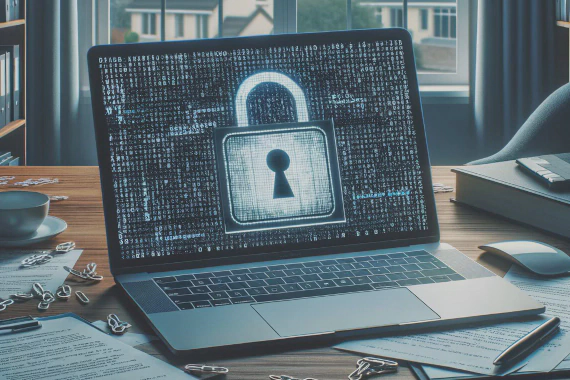
Data Protection for Remote Working
Why is data protection crucial for remote work Data protection is crucial for remote work because it mitigates the …

It goes without saying - A data breach is guaranteed to deliver a devastating blow for any healthcare organization. From compromised patient information and financial losses to irreparable damage to a facility’s reputation, a data breach can truly mean the end of the organization.
Unfortunately, healthcare data breaches are on the rise. More and more healthcare organizations find themselves victims of cyber attacks.
And that’s why I created this guide - My goal is to help your facility prepare for and prevent a potential data breach from happening.
Before we get to that, though, let’s look at your current situation in more detail.
Several factors make the healthcare industry particularly attractive and vulnerable sector for hackers:
Healthcare organizations store sensitive patient information. These include patient names, social security numbers, dates of birth, complete medical records, insurance details, and billing information.
For criminals, this data means the ability to use it for identity theft, fraud, or sell it on the dark web for significant sums.
Many healthcare facilities continue to rely on outdated systems and software that may have known vulnerabilities or lack necessary security features. This makes it easier for criminals to exploit weaknesses and gain unauthorized access to sensitive data.
Similarly, healthcare providers often prioritize patient care and may lack the necessary resources or expertise to implement basic security measures. This can result in insufficient security defenses and inadequate staff training, leaving healthcare organizations more vulnerable to attacks.
The healthcare industry is increasingly reliant on interconnected networks and systems to share patient data between providers, insurers, and other stakeholders. This interconnectivity creates additional entry points for threat actors and increases the risk of a data breach.
The healthcare industry is continually adopting new technologies, such as telemedicine, electronic health records (EHRs), and connected medical devices. While these advancements can improve patient care, they also introduce new vulnerabilities and potential attack vectors for criminals.
Healthcare providers often work in high-stress environments, which can result in employees being more susceptible to social engineering attacks, such as phishing emails. Criminals can exploit this by using tactics that prey on human vulnerabilities, such as urgency or fear.
Healthcare organizations are subject to strict regulations and compliance requirements, such as the Health Insurance Portability and Accountability Act (HIPAA) in the United States. Non-compliance can result in severe penalties, which makes organizations more likely to pay ransoms or quickly settle breaches to avoid regulatory scrutiny.
When combined, these factors make the healthcare industry an attractive target for criminals, highlighting the need for healthcare providers to prioritize cybersecurity measures and protect sensitive patient data.
We’ve looked at why the healthcare sector is such a viable and tempting target. Now, let’s look at the strategies bad actors typically use to conduct their attacks.
Criminals often use phishing emails that appear to be from trusted sources to trick healthcare employees into providing login credentials or clicking malicious links, leading to unauthorized system access.
As I mentioned, in a high-stress environment, it is quite easy for an employee just to skim an email, overlooking all the potential warning signs that this might be phishing.
This method is connected to phishing and also relies on the high-stress environment many healthcare professionals find themselves in.
In this method, attackers deploy ransomware and other types of malware to infect healthcare systems, encrypt sensitive data, and demand a ransom for its release. These infections can lead to significant downtime and disruption of services. Even when backups exist, double-extortion attacks are used to demand a second ransom not to release the sensitive data captured.
Employees, contractors, or other insiders may intentionally or unintentionally cause data breaches through unauthorized access, data mishandling, or sharing sensitive information with unauthorized individuals.
Poor password management or employees using weak, easily guessable passwords can make healthcare systems more susceptible to unauthorized access and data breaches.
Data breaches can occur due to vulnerabilities in third-party systems or services, such as billing or EHR providers. Inadequate vendor risk management can expose healthcare organizations to additional threats.
RECOMMENDED READING: How to Prevent Third-party Data Breaches
Healthcare organizations using legacy systems or outdated software may be vulnerable to known security flaws, which can be exploited by malicious users to gain unauthorized access.
Connected medical devices and IoT devices with inadequate security defenses can serve as entry points for attackers, potentially leading to data breaches and system compromise.
I already mentioned briefly what a devastating effect a data breach could have on a healthcare organization, but let’s go a bit deeper into the topic and see exactly what might happen if your practice’s data is breached.
When personal health information is leaked, it can lead to a violation of patient privacy, causing distress and potentially harming the provider-patient relationship.
Data breaches can result in significant financial losses for healthcare organizations, including regulatory fines, potential lawsuits, and the cost of remediation efforts.
Healthcare providers that experience data breaches may suffer damage to their reputation, leading to a loss of trust from patients and stakeholders and potentially impacting future business.
Data breaches can cause downtime and disrupt critical healthcare services, potentially affecting patient care and outcomes.
Healthcare organizations are subject to strict regulations and compliance requirements, such as HIPAA, in the United States. A data breach can result in significant consequences like penalties, fines, and increased scrutiny from regulatory bodies.
One of the greatest challenges with data breaches is that they aren’t always easy to find. In fact, many organizations go for months without even realizing that something’s amiss.
At the same time, the best way to prevent a data breach is to mitigate the risk before it’s exploited.
Luckily, there are several data breach detection tools that let you monitor and get alerted to potential threats before they become issues.
For example, software like Breachsense proactively monitors the dark web to find leaked company data to help you prevent data breaches before they even happen.
The second thing to do is to create a holistic cybersecurity strategy that addresses potential threats, outlines best practices, and incorporates training programs for staff.
Moreover, this strategy should be regularly reviewed and updated to adapt to new threats against your industry.
Conduct regular security audits, penetration testing, and vulnerability assessments to evaluate the effectiveness of your organization’s security measures. These tests will help you identify areas for improvement and ensure that your security controls are functioning as intended. To help avoid biases and have a realistic view of an attack, it often makes sense to hire an external cybersecurity firm to conduct the test,
Establish and enforce strict access controls for sensitive information and critical systems. Limit user access to the minimum necessary to perform their job function and regularly review and update access permissions. Implement role-based access controls (RBAC) to manage user permissions effectively and ensure that only authorized personnel can access specific resources.
Provide ongoing training for employees on cybersecurity best practices, including how to recognize phishing attacks, the importance of strong passwords, and how to securely handle sensitive patient information. Regular training will ensure that staff members are able to identify and prevent potential threats.
Protect sensitive data by encrypting it both at rest and in transit. Encrypting data helps prevent unauthorized access, even if a breach occurs. Ensure that encryption keys are securely managed and stored separately from the encrypted data.
Regularly update all systems and software with the latest patches and security updates. This helps to protect against known vulnerabilities and reduce the risk of data breaches. Implement a patch management process to ensure timely and consistent updates across your organization.
Divide your organization’s network into smaller, separate segments to minimize the potential impact of a breach. By isolating critical systems and sensitive data, network segmentation can help limit the spread of an attack and protect crucial resources.
Implement continuous monitoring and analysis of network activity to identify suspicious activity and potential threats. This will allow your organization to detect and respond to cybersecurity incidents more quickly, minimizing the damage caused by an attack.
Develop a well-defined incident response plan to ensure that your organization can respond effectively to a security breach. This plan should include clear roles and responsibilities, communication protocols, and procedures for containing and recovering from an attack.
Deploy MFA across your organization to add an extra layer of security beyond just a password. MFA requires users to provide additional verification, such as a fingerprint, one-time token, or hardware key, in addition to their password.
Ensure that connected medical devices and IoT devices are properly locked down. Very often, they will not support this functionality out of the box, which means secondary devices, like a proxy, may need to be placed in front of them to help limit access.
The 12 strategies outlined in this article can help healthcare organizations protect their patient health records and avoid financial penalties by proactively mitigating risks before they’re exploited.
The healthcare sector needs to implement better network defenses, invest in employee training, and budget the appropriate security tools to ensure both their patient data and equipment can’t be exploited.

Why is data protection crucial for remote work Data protection is crucial for remote work because it mitigates the …

The impact of hybrid work on cybersecurity Having employees work both remotely and in the office has significantly …